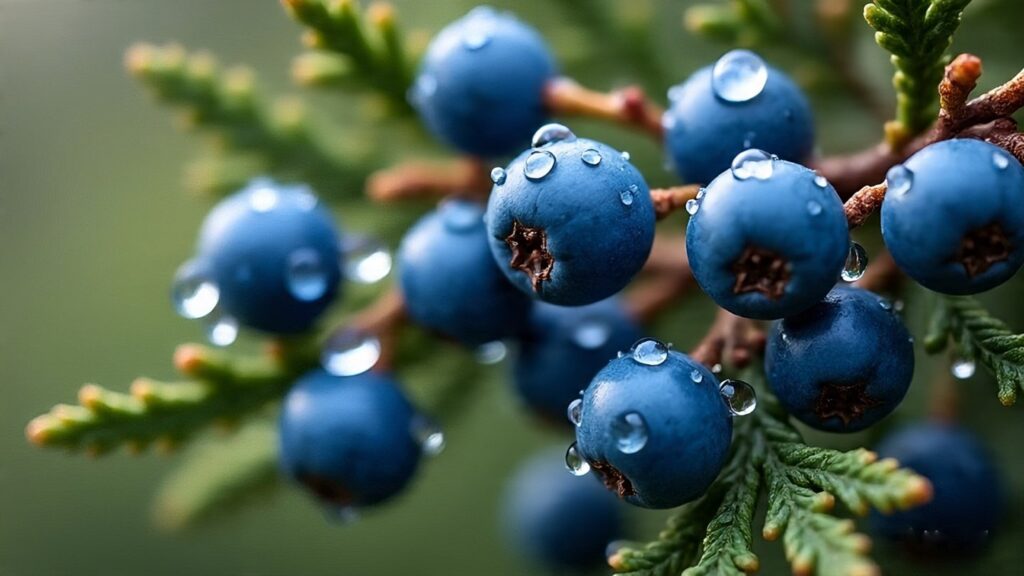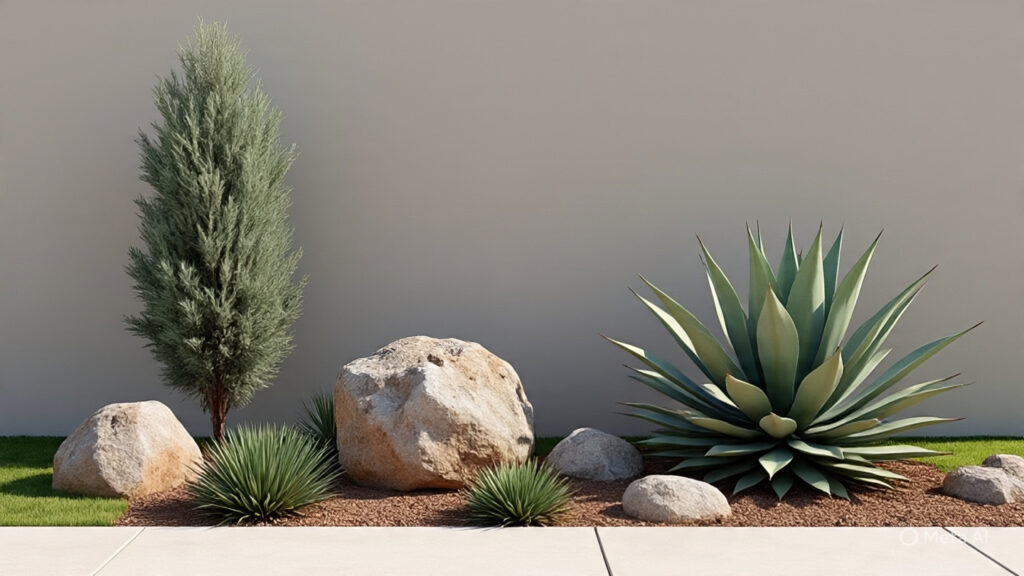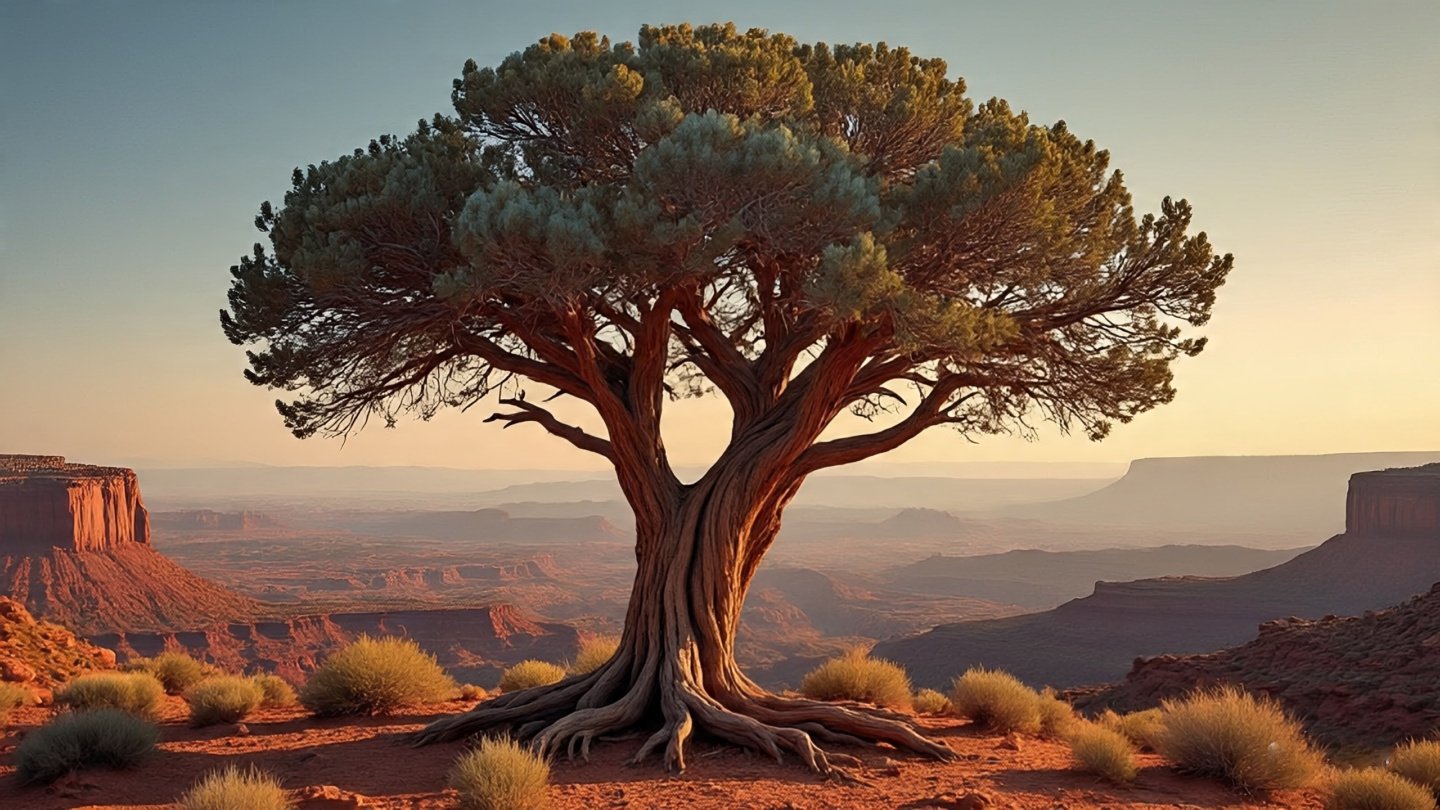Why the Utah Juniper is a Desert Survivor
The Utah juniper (Juniperus osteosperma) is a tough, slow-growing evergreen native to the arid Southwest. Known for its:
✅ Extreme drought tolerance (thrives on 8–12″ rainfall/year!)
✅ Wildlife value (birds and deer rely on its berries and shelter)
✅ Aromatic wood and berries (used for cooking, crafts, and medicine)
✅ Low-maintenance landscaping (ideal for xeriscapes and erosion control)
How to Identify a Utah Juniper
Key Features:
- Leaves: Scale-like, blue-green to gray-green (prickly on young growth).
- Bark: Shreddy, gray-brown, peeling in strips.
- Fruit: Small, blue-purple “berries” (actually cones) with a waxy coating.
- Shape: Often multi-trunked, gnarled, and asymmetrical in the wild.
Fun Fact: Some Utah junipers live 800–1,000 years—older than many civilizations!
Growing Utah Juniper Trees: Planting & Care
1. Ideal Growing Conditions
- Climate: Zones 4–9 (handles temps from -30°F to 110°F).
- Sun: Full sun (6+ hours daily).
- Soil: Rocky, sandy, or clay—must be well-draining.
- Water: Once established, no irrigation needed (overwatering kills it!).
2. Planting Tips
- Best time: Fall or early spring.
- Dig a shallow, wide hole (2x root ball width).
- Avoid mulch (traps moisture; use gravel instead).
3. Common Problems & Fixes
| Issue | Cause | Solution |
|---|---|---|
| Yellowing foliage | Overwatering | Stop irrigation, improve drainage |
| Dead branches | Juniper blight | Prune infected limbs, sterilize tools |
| Spider mites | Dry, dusty conditions | Spray with water or neem oil |

Traditional & Modern Uses
1. Edible & Medicinal
- Berries: Used as a spice (similar to common juniper) for meats, gin, and teas.
- Tea: Steep berries for a digestive aid (Native American remedy).
- Caution: Only Juniperus osteosperma berries are edible—other junipers may be toxic!
2. Woodworking & Firewood
- Aromatic wood: Burns slow and hot (great for campfires and smoking meats).
- Crafts: Carved into bowls, fence posts, and decorative pieces.
3. Landscaping Benefits
- Erosion control: Deep roots stabilize slopes.
- Wildlife habitat: Birds like the pinyon jay depend on its berries.
FAQs About Utah Juniper Trees
1. How fast do Utah junipers grow?
Extremely slow—3–6″ per year. A 10-foot tree may be 100+ years old!
2. Are Utah juniper berries poisonous?
No, but they’re bitter compared to common juniper (Juniperus communis). Avoid other juniper species unless verified edible.
3. Can I grow Utah juniper in a container?
Yes! Use a large pot with drainage and gritty soil. Dwarf varieties like ‘Tough Biscuit’ work best.
4. Do they attract pests?
Rarely—but watch for bagworms (remove by hand) or spider mites in droughts.
5. How to propagate Utah juniper?
- Seeds: Cold-stratify for 60 days before planting.
- Cuttings: Dip in rooting hormone and plant in sand (low success rate).
Why Plant a Utah Juniper?
✔ Survives neglect (perfect for low-water landscapes).
✔ Supports native wildlife.
✔ Adds year-round structure to gardens.
Ideal For:
- Xeriscapes
- Rock gardens
- Wildfire-resistant landscaping


Leave a Reply